Occupational Environment Monitoring at the Hair Straightener Manufacturing Factory
99,000 ₫
Note: The above price is calculated for one sample, the price may fluctuate depending on the area of the environment to be monitored and market movements. For more accurate pricing support, please refer to the price list or contact our consulting staff directly.
Environmental monitoring of hair straightener manufacturing factories is a session of collecting, analyzing, and evaluating factors at the workplace that may harm the health of workers.
Table of Contents
Toggle1. Overview of Hair Straightener Manufacturing Factories
a. What is a Hair Straightener Manufacturing Factory?
A manufacturing factory for hair straighteners is a production facility specializing in the manufacture of various types of hair straighteners. Hair straighteners are electronic devices used to straighten and style hair by applying heat. However, the specific production steps and machinery may vary depending on each factory and its specific production process.

b. Production Processes in Hair Straightener Manufacturing Factories
In a hair straightener manufacturing factory, the production processes may include:
- Design and research: Engineers and designers carry out research and design new models and technologies for hair straighteners.
- Procurement and quality inspection of raw materials: High-quality components and materials are purchased for manufacturing hair straighteners, including materials such as stainless steel, premium plastics, and electronic components.
- Production and assembly: Parts and components are manufactured, processed, and assembled into complete hair straighteners. This includes metalworking, plastic processing, electronic assembly, and final assembly.
- Quality inspection: Hair straighteners undergo strict quality checks to ensure proper functioning and compliance with quality and safety standards.
- Packing and shipping: Hair straighteners that pass quality inspection are packed and prepared for delivery to retailers or end customers.

c. Machinery Used in Hair Straightener Manufacturing Factories
In hair straightener manufacturing factories, various machines and equipment are used to carry out the production processes. Some commonly used machinery includes:
- Metal cutting and processing machines: Used to cut and process metal parts of hair straighteners, including heating plates, casing, control units, and other components.
- Plastic molding machines: Used to mold and shape plastic parts of hair straighteners, such as casings, control buttons, back covers, and other components.
- Welding machines: Used to weld metal or plastic parts of hair straighteners together to form the structure and frame.
- Electronic assembly machines: Used to assemble electronic components of hair straighteners, including microchips, electronic circuits, control boards, and other electronic devices.
- Printing and labeling machines: Used to print brand labels and product information on hair straighteners and affix labels to parts or packaging.
- Quality inspection machines: Used to check features, performance, and safety of hair straighteners before packaging and shipping.
- Packing and boxing machines: Used to pack hair straighteners into boxes or cartons, preparing them for shipment and delivery.

d. Occupational Diseases that Workers May Face in Hair Straightener Manufacturing Factories
Workers in hair straightener manufacturing factories may suffer from some occupational diseases related to environmental factors and their work. Common occupational diseases may include:
- Respiratory problems: Exposure to chemicals, dust, and fumes during production can lead to pneumonia, asthma, sinusitis, and other respiratory issues.
- Skin problems: Contact with cleaning agents, chemical solutions, and materials can cause skin irritation, dermatitis, contact dermatitis, and allergies.
- Hearing problems: Exposure to loud noise and vibrations from machinery can lead to hearing loss, tinnitus, and other ear-related issues.
- Spinal and musculoskeletal problems: Long hours working in improper postures or carrying heavy loads can cause back pain, disc degeneration, and other musculoskeletal issues.
- Mental health and stress: High-pressure work environments requiring precision can lead to stress, anxiety, and depression.
To ensure worker safety and health, hair straightener manufacturing factories must implement protective measures, including proper ventilation systems, personal protective equipment, correct working postures, and training on occupational safety.

e. Popular Types of Hair Straighteners on the Market
There are many popular types of hair straighteners on the market, each with distinct features and technologies. Some popular types include:
- Flat iron hair straighteners: The most common type, with two flat plates made of metal or ceramic. These use heat to straighten and style hair.
- Curling iron hair straighteners: These have cylindrical plates that can rotate, used to curl, wave, or add volume to hair.
- Digital flat iron hair straighteners: An advanced version with precise temperature control and a digital display, allowing users to adjust temperature as desired.
- Steam hair straighteners: Combine heat and steam to straighten hair gently while maintaining moisture.
- Ionic hair straighteners: Emit negative ions to soften hair, reduce static, and maintain hair moisture.
- Cordless hair straighteners: Battery-operated straighteners providing mobility without being tethered to a power cord.
2. Overview of Occupational Environment Monitoring Services
a. What is Occupational Environment Monitoring in Hair Straightener Manufacturing Factories?
Occupational environment monitoring (or workplace environment assessment) in hair straightener manufacturing factories involves collecting, evaluating, and analyzing workplace environmental factors to promptly implement measures that minimize environmental hazards to worker health and prevent occupational diseases. Monitoring is mandatory for all hair straightener manufacturing factories.
Occupational environment monitoring is crucial for caring for, protecting, and enhancing worker health, as workers are the main resource and directly generate profit for the company. Regular exposure to hazards exceeding permissible limits can negatively affect health and lead to occupational diseases.
REGISTER FOR OCCUPATIONAL ENVIRONMENT MONITORING SERVICE
b. Nam Viet’s Occupational Environment Monitoring Program
Nam Viet’s occupational environment monitoring program is designed by engineers specializing in labor safety and environmental protection. To ensure workers’ health and safety, the program uses modern measurement methods to monitor air quality, water, microclimate, physical factors, dust, and other workplace elements. This program is vital for maintaining a safe working environment and protecting worker health.
Additionally, Nam Viet’s program contributes to research and development of solutions to improve workplace environmental quality. With the dedication and professionalism of its monitoring experts, Nam Viet’s proprietary monitoring program is a breakthrough in labor safety and environmental management in Vietnam.

c. Standardization in Workplace Environment Measurement Processes
Standardization in Nam Viet’s workplace environment measurement process is crucial to ensure accurate and reliable results. The program applies recognized standards and procedures from the Ho Chi Minh City Department of Health. This ensures that collected data are reliable for evaluating workplace conditions and making decisions to improve the working environment and protect workers’ health.
These standardized procedures also guarantee that results are performed by highly qualified monitoring specialists with years of experience, allowing managers and experts to trust Nam Viet’s results and make accurate, valuable decisions for occupational health and environmental protection.
By applying standardization in environmental measurement, Nam Viet demonstrates its commitment to providing a safe working environment and protecting worker health while contributing to improving labor safety and environmental management in Vietnam.
d. Reporting Results of Occupational Environment Monitoring in Hair Straightener Factories
Monitoring results are prepared according to Form No. 04, Appendix III issued with Decree 44/2016/ND-CP and made in two copies: one sent to the contracting workplace and one retained by the monitoring organization.
The legal retention period for workplace monitoring results is indefinite.

e. Frequency of Occupational Environment Monitoring According to Law
According to Clause 2 of Article 18 of the Labor Safety and Hygiene Law 84/2015/QH13, employers must organize occupational environment monitoring to assess harmful factors at least once a year.
f. Deadline for Submitting Occupational Environment Monitoring Reports
The deadline for submission is before December 31 each year. Enterprises in production facilities must submit monitoring reports to the Department of Health where the company’s headquarters and workers are located.
If there are changes in technology, production processes, or facility upgrades that may generate new harmful factors affecting worker health, enterprises must update labor hygiene records related to occupational environment monitoring.
g. Penalties for Violations of Occupational Environment Monitoring Regulations for Employers
According to Article 27 of Decree No. 12/2022/ND-CP dated January 17, 2022, on administrative penalties in labor, social insurance, and Vietnamese workers working abroad under contracts:
- Clause 2: Fines from VND 2,000,000 – 5,000,000 for employers who do not publicly disclose monitoring results to employees at the monitored workplace and areas being assessed immediately after monitoring results are available.
- Clause 3: Fines from VND 20,000,000 – 40,000,000 for employers who fail to conduct occupational environment monitoring to control hazards to employee health as required by law.
- Clause 4: Fines from VND 40,000,000 – 60,000,000 for employers who collude with monitoring organizations to commit fraud in monitoring activities, but not to the extent of criminal liability.
3. Harmful Environmental Factors for Workers in Hair Straightener Factories
When working in hair straightener Factories, workers may be exposed to certain harmful environmental factors. The following are some potential factors that may affect workers’ health:
- High temperature: During hair straightener production, machinery and production processes may generate high temperatures. Workers have to work in hot environments, which can cause discomfort, fatigue, and increase the risk of heat exhaustion.
- Noise: Machinery in hair straightener Factories may produce loud noise. Continuous and high levels of noise can cause stress, sleep disturbance, and affect workers’ health.
- Dust and chemicals: During production, dust and chemicals may be generated from materials and production processes. Long-term exposure to dust and chemicals can irritate the skin, eyes, or respiratory system.
- Bright lighting: Strong lighting, especially glare from factory lights, can cause eye strain and visual fatigue for workers.
- Limited workspace: Hair straightener Factories often have limited space and technological layouts to optimize production processes. Workers may need to work in cramped spaces with insufficient natural light and poor ventilation.
REGISTER FOR WORKPLACE ENVIRONMENT MONITORING SERVICE
4. Measures to Improve the Working Environment in Hair Straightener Factories
To protect workers’ health, measures to improve the working environment in hair straightener Factories may include:
- Ensure effective ventilation systems and exhaust fans to reduce temperature and provide fresh air.
- Use noise control equipment, such as protective earmuffs, to reduce noise exposure.
- Apply dust and chemical management measures, including dust extraction systems and the use of safe cleaning agents.
- Provide sufficient natural and industrial lighting, ensuring appropriate brightness levels.
- Improve the workspace by increasing size and ventilation, and provide safe and comfortable working materials.
- Periodically conduct workplace environment monitoring in Factories, collect and analyze harmful factors for workers, and adjust to reduce risks to prevent occupational diseases.
5. Benefits of Periodic Monitoring in Hair Straightener Factories
An Toan Nam Viet provides enterprises with excellent benefits when using workplace environment monitoring services as regulated in Decree 44/2016/ND – CP on managing and controlling harmful factors in the working environment affecting employees.
- Enterprises can proactively control harmful factors in their workshops or Factories.
- Receive consultancy and recommendations on measures to minimize harmful factors and improve working environment quality.
- Indirectly protect human resources, a key factor in the enterprise’s development process.
- Reduce the impact of occupational diseases on human health, thereby lowering future treatment costs.
- Improve workers’ health, leading to better product quality and maintaining production output.
- Ensure compliance with labor safety laws, avoiding legal risks.
- Build reputation and professionalism in all aspects, enhancing the enterprise’s brand.
Nam Viet’s workplace monitoring service is a solution to minimize occupational disease risks, contributing to a healthy and high-quality working environment.

6. National Workplace Environment Monitoring Center
National Workplace Environment Monitoring Center of Nam Viet is a professional unit specializing in supervising and measuring workplace environment quality across all provinces in Vietnam. With a team of experienced monitoring specialists, the center uses modern measurement equipment to ensure accuracy and reliability.
In addition to providing monitoring services, the center supports clients in planning, handling, and tracking workplace environmental issues. With the motto “customer-centric,” the center focuses on customer satisfaction, meets all client needs, and commits to providing the best solutions for enterprises.
REGISTER FOR WORKPLACE ENVIRONMENT MONITORING SERVICE
With investment in technology, equipment, and human resources, Nam Viet’s monitoring center has become one of the reputable units in workplace environment monitoring in Ho Chi Minh City with the following objectives:
- We always value brand reputation and the quality of our services.
- We provide clients with the best and most suitable solutions possible.
- With a team of experienced Masters and Engineers dedicated to environmental protection and enterprise benefits.
- By working with Nam Viet Environmental Monitoring team, your company will receive professional service from monitoring experts and the best cost advantages.
The workplace environment monitoring process at Nam Viet includes the following basic steps:
- Before conducting monitoring, we ensure all machinery and equipment are calibrated according to legal regulations.
- Follow the committed workplace monitoring procedures with the Department of Health.
- Report monitoring results honestly to employers.
- If results indicate unsafe conditions for workers, Nam Viet will provide solutions, and the enterprise will implement the following:
- Implement measures to improve working conditions, minimizing harmful impacts and preventing occupational diseases.
- Organize health check-ups to detect occupational and work-related diseases for workers in unsafe environments.
- Provide material compensation to workers according to labor law regulations.

7. Workplace Environment Monitoring Service Pricing
To help enterprises conduct professional and effective workplace environment monitoring, Nam Viet provides clients with a detailed pricing table for workplace monitoring services with high quality and reasonable costs.
- Our pricing table provides detailed information on the cost of the monitoring services we offer, including travel, measurement, analysis, and reporting expenses. Clients can fully trust the accuracy and reliability of the monitoring results provided.
- We are committed to offering the most competitive and reasonable prices in the market, and we are ready to quickly and professionally answer any inquiries about our monitoring services.
- With Nam Viet’s pricing table, clients can easily choose service packages suitable for their needs. We are committed to delivering the highest satisfaction with professional service quality.
No comments yet

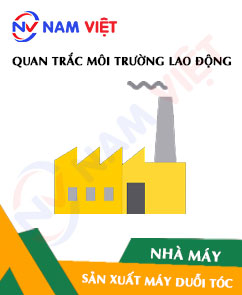
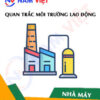
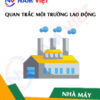

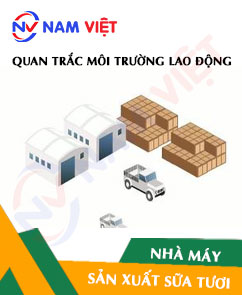


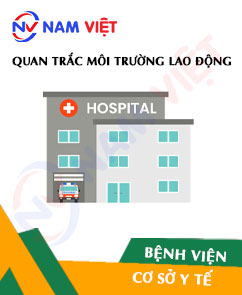
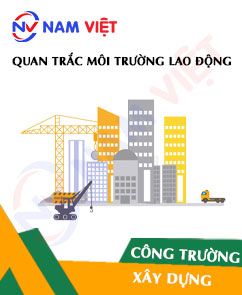
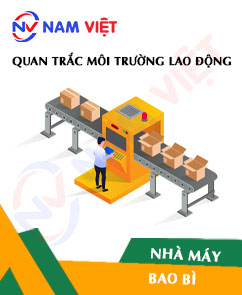

Review Occupational Environment Monitoring at the Hair Straightener Manufacturing Factory
There are no reviews yet.